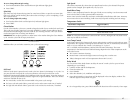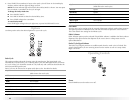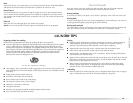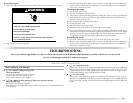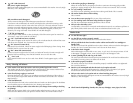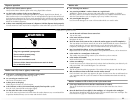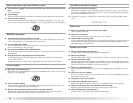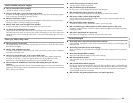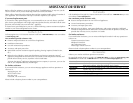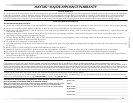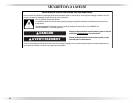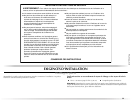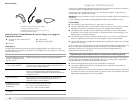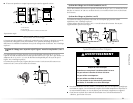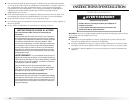
25
Load is wrinkled, twisted or tangled
■ Did you unload the washer promptly?
Unload the washer as soon as it stops.
■ Did you use the right cycle for the load being washed?
To reduce wrinkling, tangling and twisting, select a cycle with low wash and spin speeds,
such as Delicate, Handwash or Wrinkle Control.
■ Did you overload the washer?
The wash load must be balanced and not overloaded. Loads should move freely during
washing to reduce wrinkling, tangling and twisting.
■ Was the wash water warm enough to relax wrinkles?
If safe for the load, use warm or hot wash water. Use cold rinse water.
■ Are the hot and cold water hoses reversed?
Check that the hot and cold water hoses are connected to the correct faucets. If the hot
and cold water inlet hoses are reversed, the washer will display an “HC” error code at the
end of the cycle. See “Connect the Inlet Hoses.” A hot rinse followed by spin will cause
wrinkling.
Stains, gray whites, dingy colors
■ Did you properly sort the load?
The transfer of dye can occur when mixing whites and colors in a load. Sort dark clothes
from whites and lights.
■ Was the wash temperature too low?
Use hot or warm washes if safe for the load. Make sure your hot water system is adequate
to provide a hot water wash.
■ Did you use enough detergent, or do you have hard water?
Use more detergent for washing heavy soils in cold or hard water. Water temperature
should be at least 60°F (15.6°C) for soap to dissolve and work properly. For best
performance, use the detergent manufacturer's recommended amounts.
■ Did you follow the manufacturer’s directions when adding detergent and fabric
softener?
Measure detergent and fabric softener. Use enough detergent to remove soil and hold it in
suspension. Dilute fabric softener and add to the rinse portion of a cycle only. Do not drip
fabric softener onto clothes.
■ Is there above average iron (rust) in water?
You may need to install an iron filter.
■ Did you add detergent to the dispenser?
For best results, use the dispenser to dissolve the detergent.
■ Did you add fabric softener directly to the load?
Use your fabric softener dispenser. Do not drip fabric softener onto clothes.
■ Did you use a fabric softener dispensing ball?
Use the fabric softener dispenser provided with the washer. Dispensing balls will not
operate correctly with this washer.
■ Did you unload the washer promptly?
To avoid the transfer of dye, unload the washer as soon as it stops.
■ Did you add detergent, chlorine bleach or fabric softener too late in the cycle?
Detergent, chlorine bleach, and fabric softener should be added to the dispensers before
starting the washer.
■ Did you use Quick Wash on a large load?
Quick Wash is designed to wash only a few items for best results.
Garments damaged
■ Were sharp items removed from pockets before washing?
Empty pockets, zip zippers, snap or hook fasteners before washing to avoid snagging and
tearing of load.
■ Were strings and sashes tied to avoid tangling?
Straps and strings can easily become entangled in the load, causing strain on seams and
tearing.
■ Were items damaged before washing?
Mend rips and broken threads in seams before washing.
■ Did you overload the washer?
The wash load must be balanced and not overloaded. Loads should move freely during
washing.
■ Did you add chlorine bleach properly?
Do not pour chlorine bleach directly onto load. Wipe up bleach spills. Undiluted bleach
will damage fabrics. Do not place load items on top of the bleach dispenser when loading
and unloading the washer (on some models). Do not use more than the manufacturer's
recommended amount for a full load.
■ Did you follow the garment manufacturer’s care label instructions?



